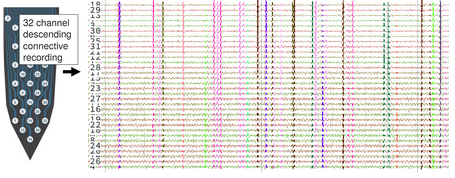The neck connective in insects connects the brain to the thoracic motor control centers. This is a bottleneck in information-flow, through which all movement-relevant information from the brain must pass through. In the context of flower-tracking behavior, we ask whether the behaviorally observed features of multisensory control may be inferred from descending information in the neck connective. Using multichannel, extracellular electrophysiology, we record from populations of neurons in tethered, flapping moths, while playing back behaviorally-relevant multisensory stimuli. With this approach we have identified mechanosensory and visual descending neurons. By giving the animals agency over stimuli presented in real-time, we can infer behavioral state and task initiation. Therefore, we are currently using motor outputs from tethered moths to modulate the presented sensory stimuli and use this as a paradigm for studying task-relevant descending information.
